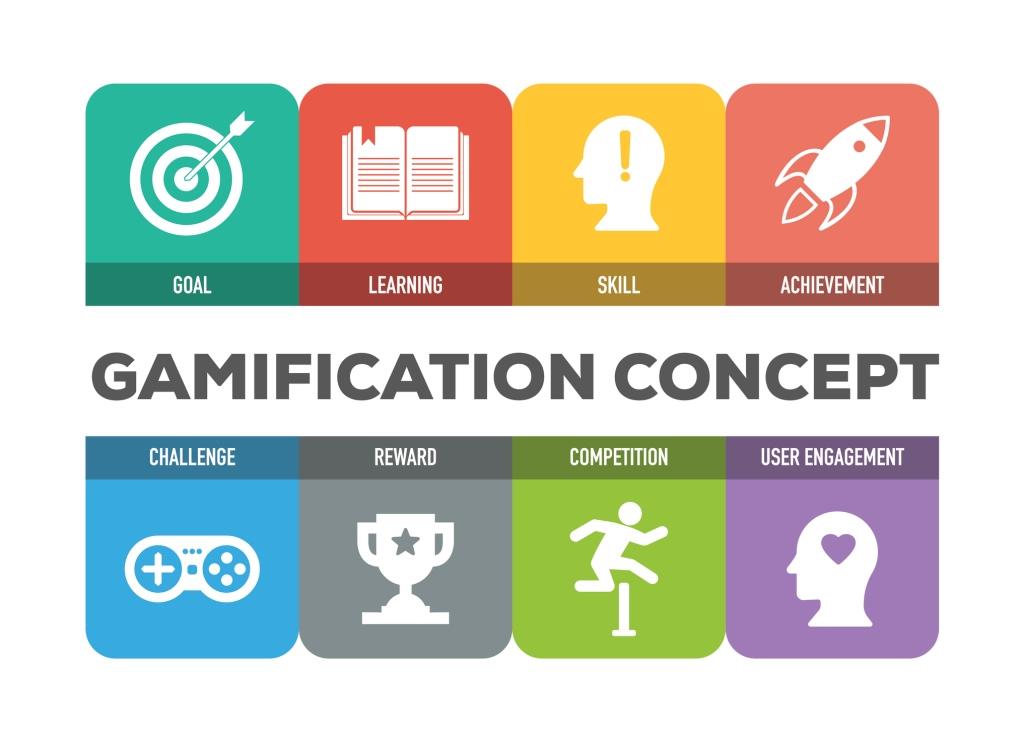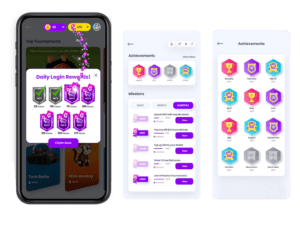There is plenty of information out there to answer “What is Gamification?” However, given that it has become quite a buzzword among digital marketers and software developers, it is important to get our facts right.

To gain a reasonable understanding of gamification, it might be helpful to demystify it by exploring common misconceptions related to it.
What Gamification is Not
- Myth 1: Gamification is the same as a game
Debunked: It is a common mistake to believe that gamification basically means to turn boring interactions (online courses, orientation, upskilling journeys, etc.) into actual games.
Games are meant to simply entertain the gamer. However, to gamify something is not just to make it fun, but also tap into deppers human instincts – competition, seeking reward, thriving under pressure, thriving off anticipation, etc. Gamified marketing seeks to leverage these core instincts, and enable people to learn something new, change their perspectives, introduce new ideas. Educators and course-designers often use the tactics of gamification marketing to make educational information more engaging and memorable.
- Myth 2: Gamification is suited only for younger, immature audiences
Debunked: Because of its association with gaming, gamification may be perceived as a strategy that appeals only to younger users – something that would lose appeal with age. A simple look at the fact that there are billions of gamers across the world, crossing multiple demographics, will reveal how inaccurate that assumption is.
There is a reason gamification is becoming a fixture in different spheres – software development, education, marketing, banking, science and all realms of innovation. The mechanics and dynamics underlying games move way beyond games – video, board or otherwise. Humans have a fundamental understanding and attraction towards reward, progress, status, conquest, goal-meeting and competition. Gamification initiatives tap into those key impulses to get desired results and reactions from participants and respondents.
- Myth 3: Gamification is unsupported by research or fact
Debunked: Have a look at Brian Burke’s “Gamify: How gamification motivates people to do extraordinary things”. It analyzes and explains three core values that drive successful gamification ventures , the values being Autonomy, Mastery and Purpose.
With these motivations in place, external rewards actually take a backseat. Campaigns structured to leverage these values trigger much deeper needs such as self-esteem building and social validation.
Now. consider the PERMA model hypothesised by psychologist Martin Seligman.It explored the vagaries of positive and negative psychological states, and how they impacted a person’s opinion of the same topic.
Good gamification models are able to utilize the five priorities highlighted by the PERMA model, and find ways to satisfy humans’ intrinsic desires. With Positive Emotion, Engagement, Relationships, Meaning and Accomplishments (PERMA) in place, there is very little chance a gamified model can fail to engage and inspire participants.
- Myth 4: A little bit of gamification will fix engagement issues
Debunked: Gamification is not magic pixie dust. Just adding a few batches and rewards will not make something a gamified campaign. Game mechanism, unsupported by information about the psychology of target audiences, is largely useless and a drain on the marketing budget.
A compelling gamified experience requires a deeper understanding of the science behind it – as detailed in the previous point. Game artifacts (badges, points, levels) are not the experience, they are simply elements that must be placed right to elicit required results.
So if you are looking to pursue gamified marketing, ensure that you understand the human impulses to appeal to. You must also have a solid experience to lead audiences to (the actual product). All the game mechanics in the world cannot save a faulty or irrelevant product from being a failure.
- Myth 5: External rewards can create sustained motivation
Debunked: Turns out, sometimes external rewards can actually reduce a person’s intrinsic motivation to do something. Gamification strategies cannot simply depend on rewards to elicit positive ROI. There’s much more to focus on – generating anticipation, creating competition, actually making respondents feel like they have surmounted obstacles to get to the prize.
Humans want much more than an easy win. They want to feel like they have achieved something, and that they actually deserve what they have won. Gamified marketing, courses or campaigns must take this into account. Create a little friendly friction to keep participants on their toes. Don’t make it an obvious victory, give them something to work for.
Without hitting the right triggers, participants will quickly lose interest even with rewards in place. This is why it is important to do some research into the science supporting gamification, and figure out exactly what makes it work.
—
Identifying the common misconceptions and myths associated with gamification helps you see past the fake news, and get to the heart of the matter. By knowing what is true about gamification, you can make an informed decision about whether this particular approach makes sense for your specific organizational requirements. The success of gamification is well-documented by now, and knowing why is the first step towards replicating that success for yourself.






